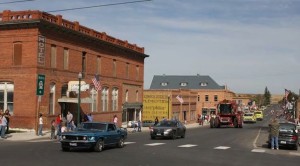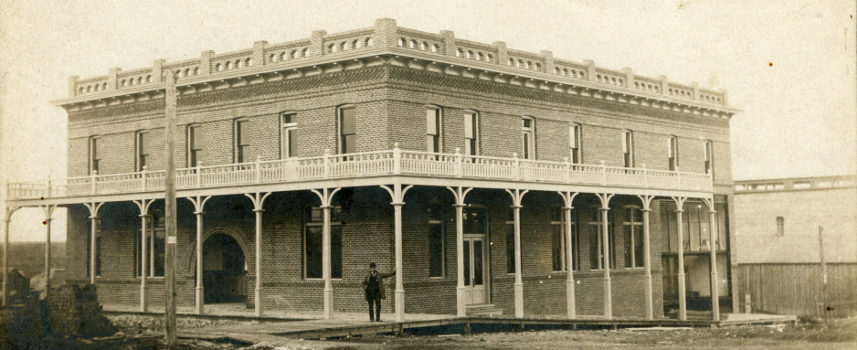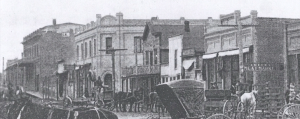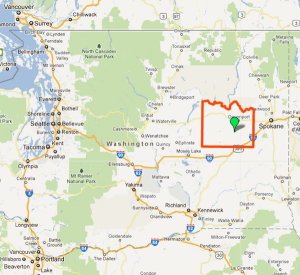Our Vision
Our vision is to effect the restoration and ongoing successful operation of the Hotel Lincoln in Harrington, Washington. It recognizes that the Hotel Lincoln is the heart of a unique historic restoration partnership now developing in the town of Harrington, Washington. A key element in this plan is for the Hotel Lincoln to catalyze this partnership through an aggressive development project and gain for itself the market advantages that come with being a key part of a healthy, local tourist industry.
There are two elements of the plan
- The complete restoration of the Hotel Lincoln, generating the capacity to effectively operate a hotel enterprise targeted to the fast growing "getaway" market seeking "special quality" destinations.
- A "restoration business" partnership, anchored by the Hotel Lincoln, that will support, monitor, evaluate and, most of all, participate in the implementation of the Harrington Historical Commission plans for the restoration of Harrington’s historic but deteriorated main street. This partnership will mutually support each other in the work of restoring the building in which their business is or will be located and engage in jointly promoting their businesses.
Long Term Overview/Objectives
This project has three objectives. They are designed to form a single interlocked "value chain" in order to create a sustainable tourist industry in Harrington and its surrounding region. They are:
- A first class "special destination" hotel.
- A unique, small town historical experience along with appropriate food, recreational and entertainment opportunities.
- Ongoing restoration, protection and enhancement of Harrington’s historic buildings and unique character.
Ultimately, this project is about one "product": the town of Harrington itself.
Harrington
The first impression of present day Harrington is a place of remarkable integrity; complete in itself, resting comfortably in its environment, and untouched by intrusive and abusive change. It is a place where fields of wheat still roll to its well-defined edges, its prominent structures announcing its purposes to all that approach without interference from junkyards or fast food outlets. It is the quintessential rural town. The railroad sidings, grain elevator, and churches advertise it is there to serve the farms on which its rests. The hotel, city hall and opera house speak to its mission to bring civility to the countryside. It is a place that embodies much of a past that many wish to remember and values that live in the spirit of this country that many look to renew in them selves as well as in their communities. The fact that Harrington has remained intact as a fine example of an early twentieth century rural center, makes it both historically important and a potentially valuable tourist attraction.
The Hotel Lincoln project will meet three major needs in Harrington: the need to preserve the historical heritage of the town, the need for new business development, and the need for lodging and commercial space. The needs of Harrington reflect those of Lincoln County as a whole. Lincoln County is a leading but sparsely populated agricultural county in Washington State. Its current population is 10,570.
It is a major center for dry land wheat production in the United States, ranked 10th out of the more than 3,000 US counties. The per capita income for Lincoln County is 78 % of Washington State’s as a whole, while the median household income is even lower, 73%. This is despite the fact that Lincoln County has an unemployment rate of 7.5% significantly lower than the 8.9% reported for Washington State. These statistics reflect the strengths and weaknesses of the rural economy that dominates the County. The development of new businesses like the Hotel Lincoln supports creating needed diversity in the economy of the County as well as providing a service essential to an industry, tourism, that has the potential of adding value to agriculture in the area.
NoaNet - Rural Broadband Network
NoaNet is expanding Washington state’s broadband network through an infusion of $140 million in federal grants to reach more than 170 communities and 2,000 schools, hospitals, emergency responders, libraries, colleges and universities. This advanced telecommunications infrastructure investment is capable of 10 gigabit Ethernet speeds making it one of the fastest and most capable fiber optic networks available in the world today. It will service Harrington.
History
On January 11, 1902, Hotel Lincoln opened its doors. It was a fine hotel and was hailed as ". . . a two story brick structure, containing twenty-four large, light and airy sleeping rooms, fitted with the most modern appointments throughout. This may safely be pronounced the most comfortably appointed hotel along the line of the Great Northern between Spokane and Everett," touted The Harrington Citizen.|
While under construction, each stone was laid by hand for the foundation, every brick formed and fired at the area factory, Pratt and Rehms, and skillfully laid by masons of the local firm, J.E. Lowery. Huge timbers were unloaded from a nearby railcar and brought to the site on horse-drawn wagons by the contractor/builder from town.
The doors closed in the 1980s.
Our Story Begins
In November 2008, the Hotel Lincoln’s rehabilitation began. A cement plaster worker, an administrative assistant, and a retired wheat rancher are the new owners of the hotel. The plans and dreams for this historic building developed slowly and are still growing as the project progresses.
A great deal of remodeling is underway to accommodate the heating and electrical improvements. Doors and windows that were unknown are now exposed. Openings that have been closed for over a half a century are opened. Walls covered in wallboard are uncovered and wainscoting that has been hidden once again shows a decorative face. Beautiful stenciling, fancy wallpaper, and a staircase for the kitchen staff .
It is easy for the imagination to wander back in time. A calling card found behind the chair rail in the lobby invites the detective in all of us to conjure up images of how it came to be there, who it belonged to. On one side of the card is the name and address of a company: Aetna Insurance, Hartford, Conn.; Rudolph Dorn, Manager. The other side of the card has a handwritten message that says "December 19, 1911, I found you." It was signed H. Jalmer Johnson, Alexandria, Minn. A 1912 tin of Copenhagen, other business cards, receipts and pennies from the early 1900s, and other odds & ends have been discovered as nooks and crannys, long hidden, have been revealed.



